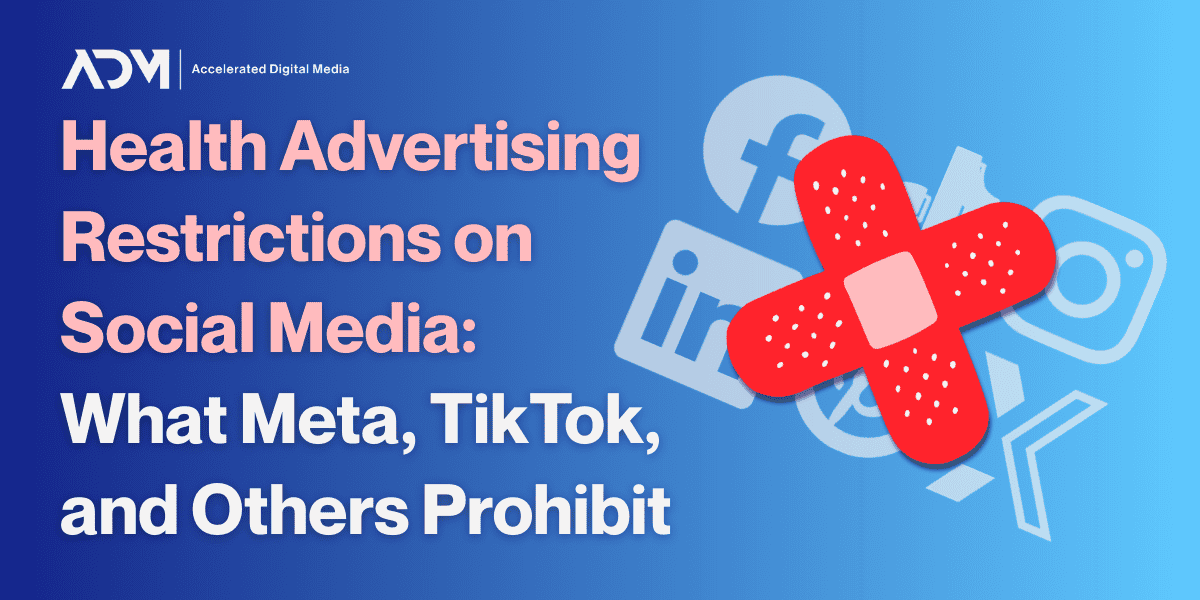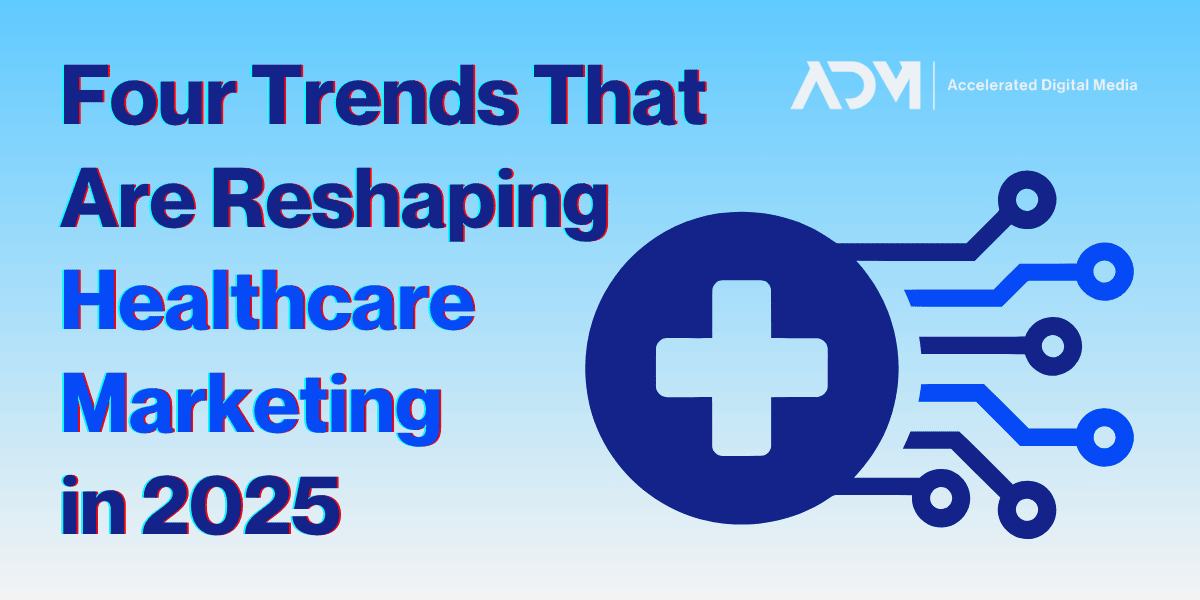Data — it is more than just a digital marketing buzzword. Data is the oil that runs the programmatic advertising engine.
Given the personal nature of digital health and the implications of a cookie-less marketing world on the horizon, finding the right data to define your ideal target audiences is more critical than ever for successful D2C programmatic targeting initiatives.
While programmatic advertising provides various opportunities in targeting (and at scale), honing in on the most effective data and strategy can be overwhelming. Here we unpack the best ways to get started on your programmatic D2C data research process.
Know The Key Types of Data Available to You
Digital health data varies by type and source. Understanding the key types of data D2C health brands rely on for performance marketing helps you build effective target audience segments. Defining this data is also the first step in choosing demand-side-platform (DSP) partners who can connect you to the desired data sets to fuel your D2C programmatic advertising campaigns.
What is First, Second, and Third-Party Data?
Data sets are defined by how they are collected and who owns them.
- First-Party Data is collected from your own sources with your patients’ consent, such as the information a patient willingly provides in a health and wellness quiz on your homepage.
- Second-Party Data is the input of any brands you directly partner with. This data pertains only to user records your brand and your partner brand hold in common with one another. For example, media publishers might sell their first-party data to advertisers, making it second-party data to the advertisers.
- Third-Party Data is aggregated data from multiple sources that is often shared, bought, and sold in marketplaces or exchanges. These data sets can be divided up by demographics, geography, behaviors, and modeled actions. Functionally, most third-party digital health data can be anonymized to protect patient privacy and remain HIPAA-compliant.
What is Digital Health Contextual Data?
Unlike the user-action data historically gathered by a website’s cookies, contextual data refers to information about the content of a web page. This data fuels contextual advertising and targeting — the practice of placing ads on web pages based on the content of those pages. Contextual data is not user-specific but is page- and content-specific. For example, a pharmaceutical brand promoting a new migraine medication could target keywords that patients would search for online, like “migraine relief.” Using a programmatic ads approach, relevant migraine relief ads would display on articles that rank for that keyword.
Putting Data to Work for Your Programmatic Campaigns
When it comes to programmatic advertising, the types of data D2C health marketers focus on most is contextual and third-party data.
Of course, data isn’t actionable on its own. It takes applying strategic techniques and technology to realize data’s potential and turn insights into dynamic, programmatic advertising campaigns.
Best Practices To Source Programmatic Ad Campaign Data
After helping a number of digital health and wellness companies execute effective programmatic strategies, our programmatic experts at ADM have compiled five best practices for D2C health brands to follow when choosing their targeting data.
1. Strategize Alongside SEM to Define Your Targeting
Before you choose the data sets and data partners to drive your programmatic advertising campaigns, determine which patient populations — and the keywords relevant to them — you will be targeting. Strategizing alongside search engine marketing (SEM) ensures you understand what keywords and keyword themes are top performers for search campaigns most relevant to your brand. And, once you’ve defined the types of patients and the keywords you will target in your programmatic ads, it’s time to choose a demand-side Platform (DSP).
2. Bring Your Data Together with a Demand-Side Platform
You will need a demand-side platform (DSP) to deploy compliant programmatic advertising across a range of powerful ad channels (apps, connected TV, streaming audio advertising, online display, native advertising, and more). DSPs combine your data and ad partnerships to connect you to available ad inventory so you can build campaigns, construct detailed customer audiences, and bid on ad space.
There are countless DSP options available to you, and it’s essential to pick one that fits your team’s exact needs.
Choosing the right DSP based on data providers and available inventory ensures you will meet your targeting goals. Demand-side platforms offer different data partner options across contextual and third-party audiences. Each DSP has its own benefits regarding data providers, ad placement inventory, and reach.
For example, leveraging Amazon’s DSP allows D2C health brands access to Amazon’s first-party data, where over 65% of consumer product searches now occur. Aside from specific product purchases and in-market search history, Amazon makes available Lifestyle and Life Event audience segments in its DSP that could signal digital health-related needs, such as new parents or interests in personal care products.
3. Leverage the Power of an Agency to Partner with DSPs
Partnering with a digital marketing agency to manage and fulfill programmatic campaigns gives D2C health brands more control over their campaign results. A knowledgeable agency will also save you time and money.
An agency serving clients in the digital health industry already has established access to the most relevant D2C health DSPs and data partnerships. Most DSPs require their clients to commit to spend minimums, upwards of $35,000 a month, in exchange for access to their data and ad inventories. This quickly balloons into a significant budget line item if you intend to manage your programmatic advertising strategy in-house.
When using an agency to manage your programmatic buys, the agency appears as the single client to the DSPs. This means they can use the cumulative resources of all their accounts to meet a DSP’s spend threshold. In this way, D2C health brands only spend what makes sense for their unique programmatic needs while getting access to the DSP.
Agencies specializing in digital marketing for D2C health brands also bring an overall industry knowledge to your campaigns. They know which DSPs and data providers have the best aggregated data for health-related issues, such as Crossix, IQVIA, Purple Lab, and Lasso. They also know how to choose the best ad inventory for your unique offerings to help you reach your target audiences.
4. Use Data Creatively to Reach Your Target Audience
Programmatic advertising is a big-tent term that covers a variety of creative advertising mediums. You’ll want to consider how to use second-party, third-party, and contextual data creatively to reach your target audience.
For example, many ADM clients in the digital health space see success using podcasts as an advertising medium within their programmatic campaigns. There are several unique benefits to targeting these patients who tune in to focused programs relevant to a brand’s offering:
- Effective demographic and genre targeting
- Increased user engagement and recall
- Increased brand trust
- Higher-quality inventory access
- Lower creative costs
The insertion of ads into audio content like podcasts or streaming music services is just one example of how D2C health brands accomplish better targeting and retargeting for efficient campaigns.
5. Don’t Forget Retargeting
And don’t forget the power of your own first-party data when setting up programmatic retargeting campaigns. After all, programmatic advertising has fewer limitations for website retargeting than Google and Facebook platforms.
You can increase your first-party data pool and its quality through effective prospecting. When retargeting these patients with programmatic campaigns, you should leverage sequential ad experiences and segment your audience by recency from the last time they interacted with your brand. This allows for more customized messaging and varied performance options.
Get Started with a Partner
When it comes to procuring the best data for programmatic targeting strategies, choosing the right DSP, or conceptualizing and monitoring creative campaigns, you don’t have to go it alone.
ADM’s programmatic advertising approach prioritizes data insights and transparency. We help our D2C health brand partners build audience profiles that fit their unique brand and business goals. Contact us for a free consultation to see how our rich, insight-laden programmatic campaigns can fuel your success.




